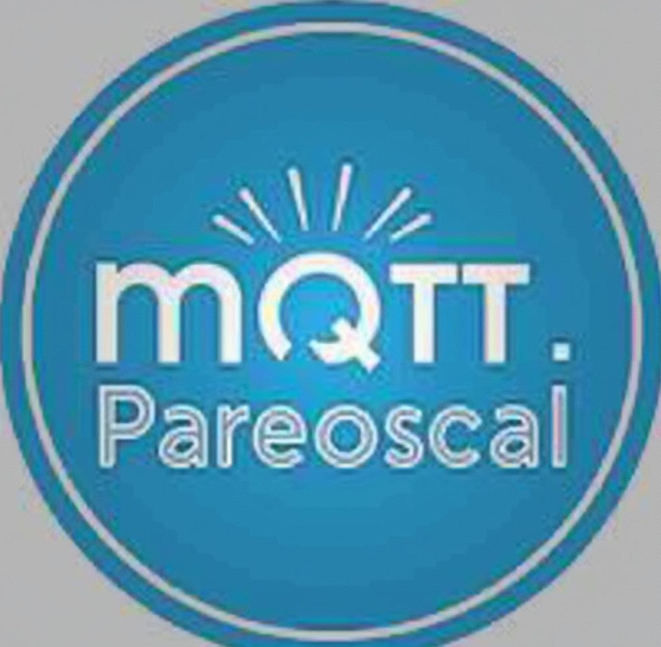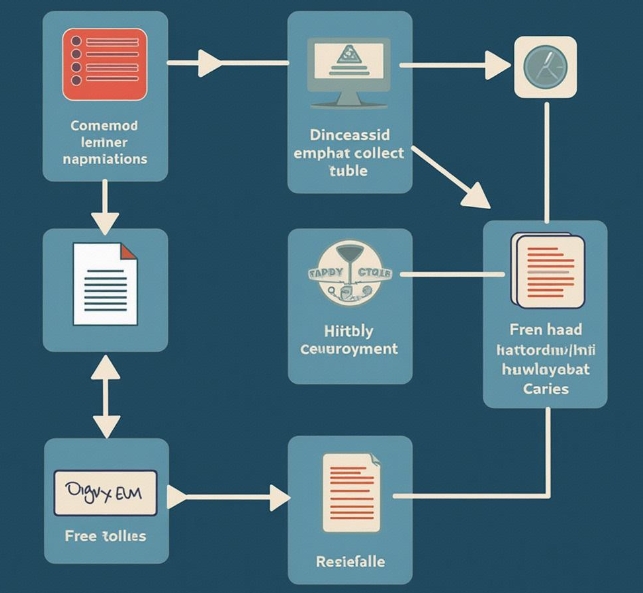Communication Protocols in IoT Development: MQTT, CoAP, and HTTP
- latest articles
- 1.DApp Development & Customization: Merging Diverse Market Needs with User Experience 2.Analysis of the Core Technical System in DApp Project Development 3.How to achieve cross-chain interoperability in Web3 projects? 4.How does the tokenization of points reconstruct the e-commerce ecosystem? 5.How to Set and Track Data Metrics for a Points Mall? 6.What is DApp Development? Core Concepts and Technical Analysis 7.Inventory of commonly used Web3 development tools and usage tips 8.Development of a Distribution System Integrated with Social E-commerce 9.Six Key Steps for Businesses to Build a Points Mall System 10.What is DApp Development? A Comprehensive Guide from Concept to Implementation
- Popular Articles
- 1.Future Trends and Technology Predictions for APP Development in 2025 2.Analysis of the DeFi Ecosystem: How Developers Can Participate in Decentralized Finance Innovation 3.From Zero to One: How PI Mall Revolutionizes the Traditional E-commerce Model 4.DAPP Development | Best Practices for Professional Customization and Rapid Launch 5.How to Develop a Successful Douyin Mini Program: Technical Architecture and Best Practices 6.Recommended by the Web3 developer community: the most noteworthy forums and resources 7.From Cloud Computing to Computing Power Leasing: Building a Flexible and Scalable Computing Resource Platform 8.Shared Bike System APP: The Convenient Choice in the Era of Smart Travel 9.How to Create a Successful Dating App: From Needs Analysis to User Experience Design 10.From Design to Development: The Complete Process of Bringing an APP Idea to Life
With the rapid development of Internet of Things (IoT) technology, the interconnection of various smart devices and systems has become increasingly important. In IoT, communication protocols play a crucial role as they serve as bridges for information transmission between different devices. As IoT application scenarios continue to grow, communication protocols are also evolving and innovating to ensure systems can transmit data efficiently, reliably, and with low latency. Among the many IoT communication protocols, MQTT (Message Queuing Telemetry Transport), CoAP (Constrained Application Protocol), and HTTP (Hypertext Transfer Protocol) are the three most common protocols. This article will delve into the characteristics, advantages, and application scenarios of these three protocols to help readers better understand their use in IoT development.
I. Overview of MQTT Protocol
MQTT is a lightweight communication protocol based on a publish/subscribe messaging model, first proposed by IBM in 1999. The core concept of MQTT is communication through "message queues," and it is typically used in low-bandwidth, high-latency, or unreliable network environments, especially in scenarios requiring high data transmission between devices. The MQTT protocol is widely used in IoT fields, particularly in smart homes, environmental monitoring, and industrial automation.
1.1 How MQTT Works
MQTT uses a publish/subscribe model, and the communication process is as follows:
Clients Subscribe to Topics: Clients can receive messages by subscribing to specific topics. These topics typically represent a type of device or data, such as "home temperature and humidity" or "environmental monitoring."
Publish Messages: Devices can publish the data they collect or status information as messages to a specific topic.
Message Delivery: Once a message is published, all clients subscribed to that topic will receive it.
MQTT features low power consumption, low bandwidth usage, and a simple message delivery mechanism, making it particularly suitable for IoT environments with poor network conditions.
1.2 Features and Advantages of MQTT
Lightweight Protocol: MQTT is very simple, uses minimal bandwidth, and has high message delivery efficiency, making it suitable for resource-constrained devices.
Real-Time Capability: MQTT provides efficient real-time message delivery, ensuring IoT devices can respond quickly.
Reliability: MQTT supports three Quality of Service (QoS) levels to ensure reliable message delivery.
QoS 0: Message is sent at most once, with no delivery guarantee.
QoS 1: Message is sent at least once, ensuring delivery.
QoS 2: Message is delivered exactly once, avoiding duplicates.
1.3 Application Scenarios of MQTT
MQTT is widely used in smart homes, industrial automation, and connected vehicles. For example, temperature and humidity sensors and smart bulbs in smart home systems can communicate via MQTT for real-time data collection and control.

II. Overview of CoAP Protocol
CoAP (Constrained Application Protocol) is a web transfer protocol designed for constrained devices and networks, similar to HTTP but better suited for low-power, low-bandwidth IoT environments. CoAP was proposed by IETF (Internet Engineering Task Force) in 2013 and has become one of the standard communication protocols in the IoT field.
2.1 How CoAP Works
CoAP uses a request/response model, similar to HTTP, but it uses UDP at the transport layer instead of TCP, making it lighter and more efficient. CoAP's message structure is very simple, consisting mainly of request and response message types.
Client Sends Request: The client sends a CoAP request message to the server to request a resource, including the request method (e.g., GET, POST, PUT, DELETE) and the target resource address.
Server Responds: The server provides the corresponding resource or status information based on the request and sends a response message.
CoAP performs particularly well in low-power devices and unreliable network environments, making it especially suitable for communication between IoT devices like sensors and actuators.
2.2 Features and Advantages of CoAP
Low Overhead: CoAP uses a simplified message format and UDP transport layer, reducing packet size and bandwidth usage.
Supports Multicast: CoAP supports multicast communication, allowing multiple devices to receive the same message simultaneously, which is useful for group device control.
Interoperable with HTTP: CoAP can interoperate with HTTP via RESTful interfaces, enabling CoAP devices to easily interact with traditional web services.
Suitable for Mobile Networks: Since CoAP is based on UDP, it adapts better to the characteristics of mobile networks.
2.3 Application Scenarios of CoAP
CoAP is particularly suitable for IoT devices with low bandwidth requirements and resource constraints. For example, smart sensors and environmental monitoring devices that need to communicate with low power and bandwidth consumption are well-suited for CoAP.

III. Overview of HTTP Protocol
HTTP (Hypertext Transfer Protocol) is the most widely used internet communication protocol, with almost all web applications relying on it. HTTP is an application-layer protocol based on a request/response model, widely used for communication between clients and servers. HTTP supports a comprehensive range of functions, but in IoT scenarios, especially in constrained environments, its performance is not always optimal.
3.1 How HTTP Works
HTTP is based on a client-server model where the client sends an HTTP request and the server returns an HTTP response. The message format of HTTP requests and responses includes the request/response line, headers, and message body.
Client Sends Request: The client sends an HTTP request to the server to request data, typically including the request method (e.g., GET, POST, PUT, DELETE) and the resource path.
Server Responds: The server returns the corresponding resource or status information based on the client's request.
The main characteristic of HTTP is its support for rich functionality and flexible applications, but it has some drawbacks, particularly in low-bandwidth, low-power IoT environments.
3.2 Features and Advantages of HTTP
Wide Application: As the most commonly used internet protocol, HTTP has a broad application base and a mature technology ecosystem.
Reliable Transmission: HTTP is based on TCP, ensuring reliable data transmission, making it suitable for scenarios requiring high reliability.
High Flexibility: HTTP supports multiple methods (e.g., GET, POST, PUT, DELETE) and complex headers and data formats, making it very flexible in web applications.
3.3 Limitations and Challenges of HTTP
High Overhead: HTTP requires TCP transmission, which involves connection establishment, resulting in significant overhead and latency. In IoT, many devices have limited network bandwidth and battery life, making HTTP potentially inefficient.
Lack of Real-Time Capability: HTTP is based on a request/response model and cannot push messages in real-time, limiting its use in certain IoT scenarios.
3.4 Application Scenarios of HTTP
HTTP is suitable for IoT devices that need to integrate with web applications, such as communication between smart home cloud platforms and user web applications.
IV. Comparison and Selection
In IoT development, choosing the right communication protocol is crucial. MQTT, CoAP, and HTTP each have their strengths and weaknesses, and developers need to make choices based on specific application scenarios.
MQTT: Suitable for IoT devices requiring real-time communication, low bandwidth, and low power consumption, with wide applications in smart homes, environmental monitoring, and connected vehicles.
CoAP: Suitable for resource-constrained devices and networks, performing well in scenarios involving smart sensors and actuators.
HTTP: Suitable for integration with traditional web applications, especially in scenarios requiring high reliability and flexibility, and for devices not constrained by bandwidth and power limitations.
V. Conclusion
The development of IoT technology relies on efficient and reliable communication protocols. Among the many IoT communication protocols, MQTT, CoAP, and HTTP are the three most common. Each protocol has its unique advantages and suitable scenarios. Developers need to choose the appropriate protocol based on application requirements, device capabilities, and network environment to achieve optimal performance for IoT systems.
-

How to Use IoT Development to Enhance Supply Chain Efficiency
With the rapid development of the global economy and the deepening of digital tr···
-

Development and Innovation of the Internet of Things in the Healthcare Sector
With the rapid advancement of information technology, the Internet of Things (Io···
-

Data Storage and Analysis Methods in IoT Development
The Internet of Things (IoT) is one of the most revolutionary innovations in tod···

 Blockchain
Blockchain










